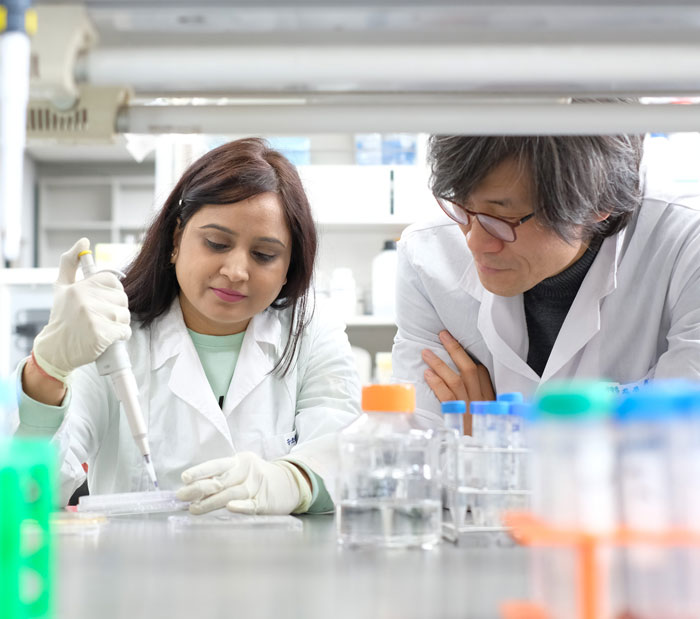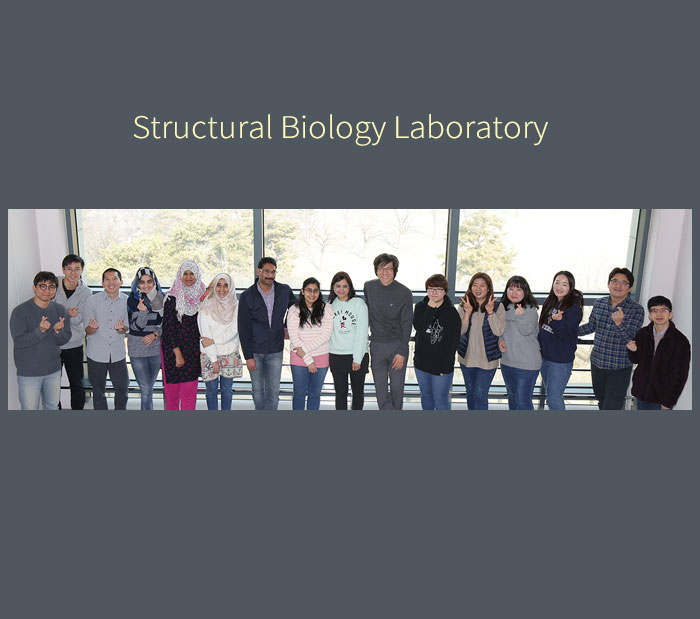Research Stories
Finding a hope to overcome antibiotics resistance from the herbal plant
Antivirulence agent from Ashitaba extract
Medicine
Prof.
KIM, KYEONG KYU
Dr. REKHA ARYA
According to the Sweden Global Challenges Foundation, antibiotic resistance is one of top 10 global catastrophic risks, and a solution needs to be found emergently. UK Parliamentary Papers in 2016 warned that over 10 million people will die in 2050 from superbacteria, if a solution to the antibiotic resistance problem cannot be found. It is certain that the antibiotics resistance is a problem of urgency and grave seriousness.
Antibiotic resistance is a natural phenomenon that occurs inevitably as the bacteria adapts to the antibiotics through the process of mutation. Hence, developing new antibiotics with a new mechanism is necessary.
Prof. Kim’s team identified that xanthoangelol B, which was extracted from ashitaba, inhibited the synthesis of virulence factors in Staphylococcus aureus, one of the most serious antibioticresistant bacteria, and induced clearance through a host immune response without pathogenesis. The group additionally established chemical synthesis methods for xanthoangelol, and prepared its derivatives. Among such derivatives, PM-56 showed anti-virulence activity more effective than that of the original xanthoangelol.
Ashitaba is also called the “Hermit grass” and the name came from the traditional belief that those who eat ashitaba can become Taoist hermits. Also, its binomial name, Angelica utilis, is translated as “angel’s gift”. As the names suggest, ashitaba was believed to have special drug effects, and has been widely used as a healthy ingredient. This research has proven its effect by discovering its antivirul role.
Professor Kyeoing Kyu Kim said, “In this study, we successfully validated a potency of the virulence-inhibitory antibiotics as a new concept of antibiotic mechanism. We expect further development of new therapeutic approaches for bacterial infection, which are free from drug resistance.”
This study was conducted in “Institute for antimicrobial resistance and therapeutics” (https://shb.skku.edu/iamrt/), and published in Medicinal Chemistry (Nov, 2018). In addition, it was introduced in YTN science and Donga Newspaper.
YTN Science: https://youtu.be/Ax_Rd8-85IM
Donga Science: http://news.donga.com/3/all/20181202/93122384/1
Figure 1. Mechanism of PM-56, antivirulence inhibitor, to S. aureus.
PM-56 blocks relay of phosphate group from a histidine kinase SeaS to a response regulator SaeR in SaeRS system. By blocking transfer of phosphate group, synthesis of virulence factors in downstream of SaeRS system is also blocked.
Figure 2. Model experiment to validate antibiotic effect
The viability of antibiotics resistant bacteria-infected Galleria mellonella larvae is 20% after 72 h. However, the viability of PM-56-treated larvae is increased dose-dependently, and finally 4.262 mg/kg body weigh-treated larvae shows 100% viability. It means S. aureus infection can be cured by the PM-56 treatment.


